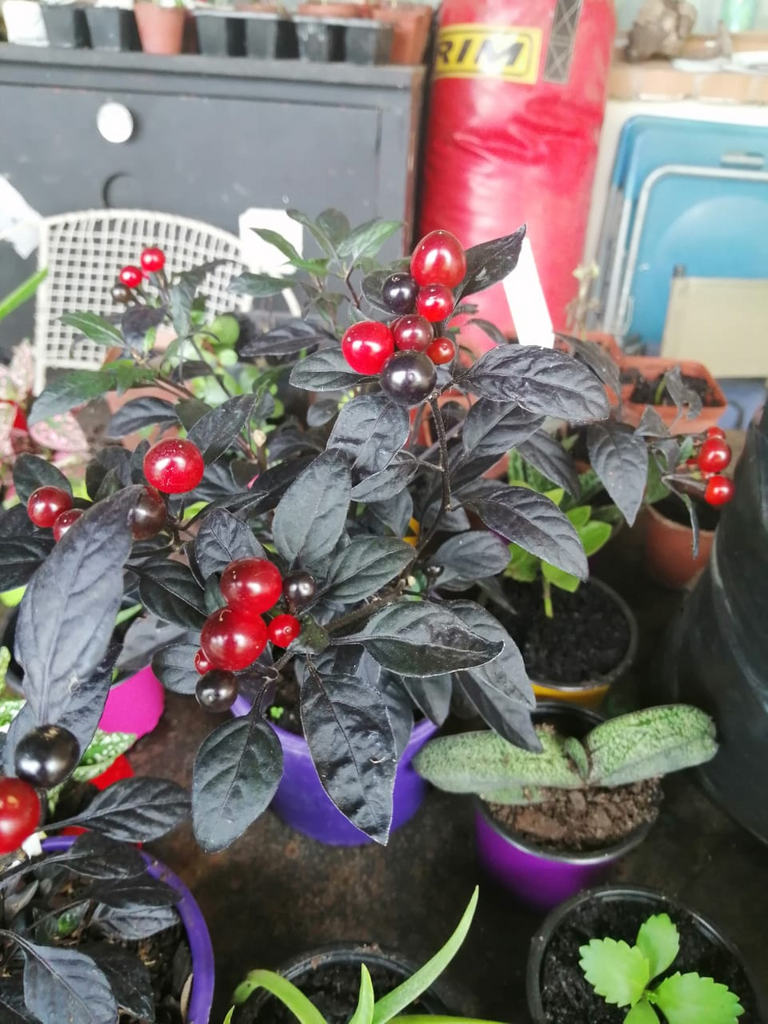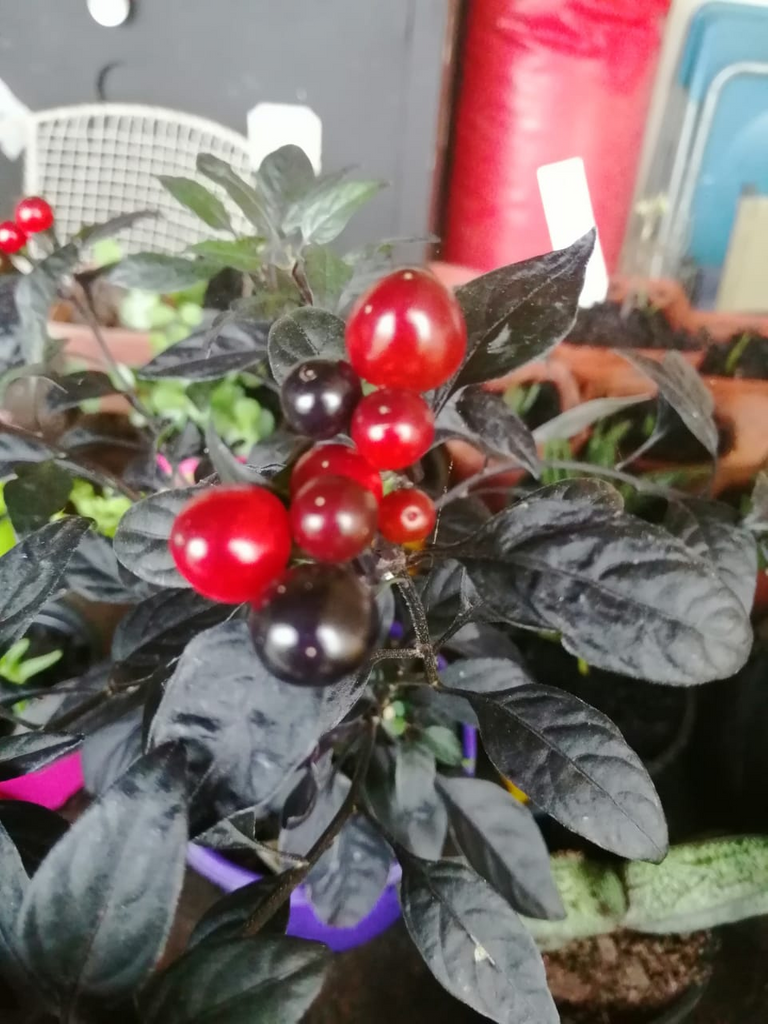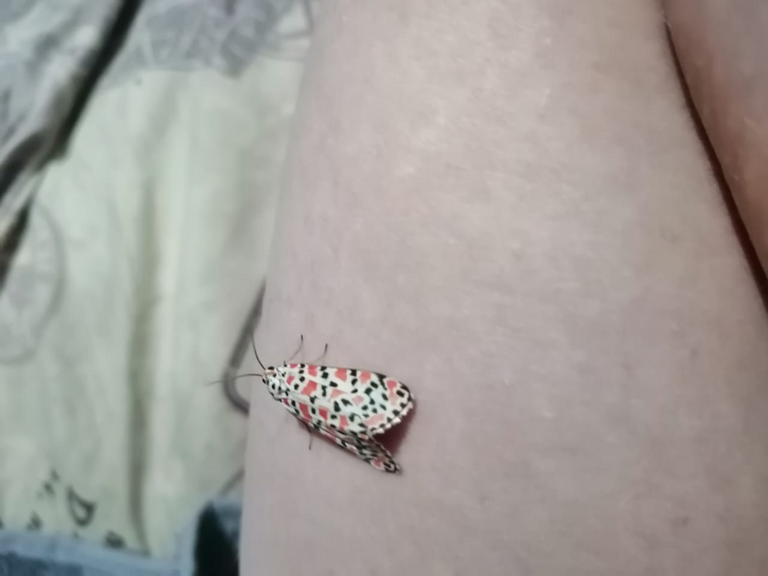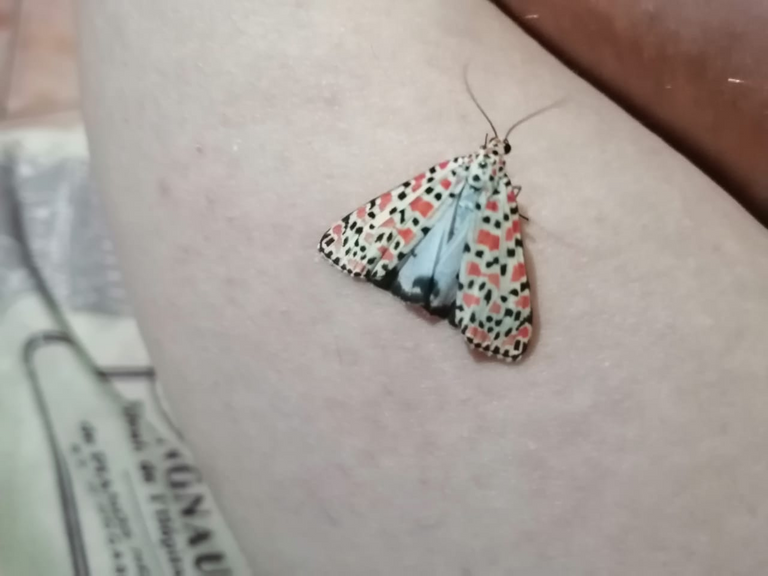Growing My Own Black Pearls & An Interesting Moth Along the Way

I simply love coming across amazing new plants that I can add to either my medicinal or edible plant collection, and I always keep an eye out for just that. I think the thing that fascinates me the most about collecting plants, is the fact that you only realize how little you know once you start knowing more.
Recently I came across a really cool looking plant called the black pearl chilly, it has gorgeous firm but almost velvety black leaves, and it makes stunning little black chilies that eventually turn red when it goes ripe. Needless to say, I simply had to add this to my collection.
I promptly bought two from the nursery where I saw them and brought them to the farm.

The chilies on these plants are edible despite the fact that they might come across as ornamental. So of course I had to try one almost as soon as I got home, and I must say I was pleasantly surprised at the lovely flavor as well as the very unexpected blast of heat from this tiny little chilly, it certainly didn't look or smell as hot as it proved to be.
A Bit of Background:
According to Wikipedia:
~ Black Pearl pepper is a cultivar of Capsicum annuum. It is characterized by distinctive black leaves and fruit. It was developed by Arboretum Floral and Nursery Plants Research Unit scientists Rob Griesbach and John Stommel of the Agricultural Research Service’s Vegetable Laboratory.[1] This pepper plant is notably similar to another strain, named the Black Hungarian, another designer pepper plant.[2] Though edible (the flavor has a citrus undertone with a slow burn between 4 and 12 times hotter than a jalapeño on the Scoville Scale), it is considered an ornamental plant and even won an award for its beauty from All-Americas Selections in 2006.[1] The Black Pearl has characteristic semi-gloss black to deep-purple leaves with peppers that are black and turn crimson when fully ripened. ~ source
But for me the beauty of owning amazing plants runs slightly deeper than just having a pretty plant to admire, it is all about propagating said plants and ensuring that there are future generations that stem from the parent stock - whether it be by seed or by cloning the plants by means of taking cuttings.
Once the peppers on the plant was ripe and ready - I harvested what I could, and then dead ended the plant where necessary. after that I tried taking cuttings from one of the plants to see how well they would be able to propagate using this method. (The nice thing about propagating from cuttings is that it reduces the waiting time for the new plant to fruit because you are growing directly from an already mature plant)
Sadly my first run on this failed, and I didn't want to cut up the second plant until I could see how well the first plant reestablished - I certainly did not to kill my new plants that early into the game.
But luckily I still had a whole bunch of the peppers left from the harvest, so I decided to try growing them from seed in stead.
I simply broke open a few of the chilies, removed their seeds and placed them into a 1.5L planting bag filled with potting medium, once I sprinkled the seed on top of the medium, I lightly covered them with some more of the same medium so that the seeds were about 0.5cm deep under the soil. I watered the bag thoroughly and then let that sit. From there I simply misted the bag three times a day to keep the top layer of the soil nice and moist in order to give the seeds the best possible chance to germinate.
With this method - I had a great deal of success - and I now have over a hundred seedlings that will be ready to be split and bagged out individually within the next week or so. I am really elated at the successful germination of these plants.

Like I said earlier, the majority of my plants are either edible or medicinal, so having an excess of chilly seedlings means that I will have enough to start an entire patch dedicated to them. this means that I will have enough of these power packed peppers for home use as well as to use in my home made preserves and sauces, and whatever is left I can easily sell at the local farmers market - On top of that I will also have some spare plants to keep in bags ready to sell as is from my nursery stock - so this is certainly all-round a win-win situation.
On a Side Note:
Completely unrelated but I thought if it fascinated me as much as it did, that this little visitor moth might just be worth sharing with you guys.

This little guy decided to pay me a visit in my room while I was working on the laptop - I have absolutely no clue what type of moth this is but I simply loved its 'retro 90s' wing pattern.
He didn't exactly want to sit still for long enough so that I could take a decent picture with my really crappy phone camera, but at least I managed to get two shots of him that is decent enough to give yo and idea of what he looks like.

I especially loved the little 'fluer de lis' motive on his inner wings, and I would have loved if he had opened his wings up for long enough for me to see what lies beneath before he flew off - guess you can't win them all, right?
🤣@breezin send those moth pictures to @r0nd0n he loves moths 🤣🤣
Hahaha, we were on a voice call when I took that pictures, and I did send them on to him. But he didn't appear to be too impressed LOL